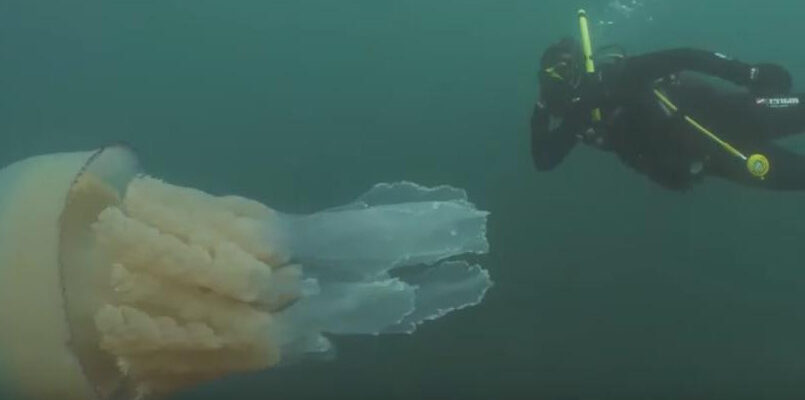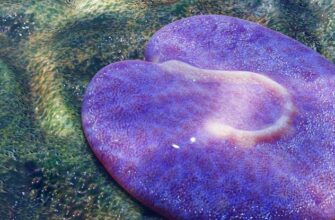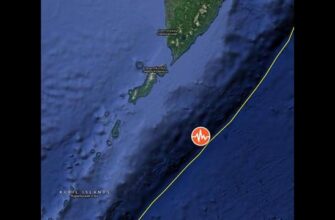Recent weeks have seen an unusual spectacle along the Azov Sea coastline: vast numbers of barrel jellyfish, typically more accustomed to the deeper, saltier waters of the Black Sea, have become the unexpected, pulsating occupants of its shallows. This peculiar phenomenon is not just a visual curiosity; it presents a practical challenge for beachgoers and a fascinating case study for marine biologists.
An Unprecedented Influx?
Reports from Krasnodar Krai suggest that these gelatinous visitors are congregating in such densities that they form a continuous, undulating barrier along the shoreline. While visually striking, these aren`t merely harmless blobs. The barrel jellyfish (Rhizostoma pulmo), also known as the dustbin jellyfish, possesses stinging tentacles capable of delivering a discomforting, nettle-like burn upon contact. For a sea often characterized by its relatively low salinity and typically less formidable marine life, this influx marks a significant deviation from the norm, sparking curiosity and a fair bit of local concern.
Decoding the Ocean`s Message: Why Here, Why Now?
The sudden appearance of these sizable marine invertebrates in such numbers prompts an obvious question: what precisely is drawing them to the Azov Sea? Experts offer a multi-faceted explanation, painting a picture of environmental shifts and natural cycles aligning to create this unique scenario.
The Salinity Equation
One prominent theory points to the changing salinity of the Azov Sea. Historically, the sea has maintained a relatively lower salt content due to freshwater inflow from rivers and, notably, the North Crimean Canal. However, with the reported disruption of the Kakhovka Reservoir in 2023, a significant source of freshwater has been curtailed. This reduction in freshwater influx allows for a greater influence of the saltier waters from the Black Sea, where Rhizostoma pulmo typically thrives. As the Azov Sea becomes more saline, it transforms into an increasingly hospitable environment for species previously considered uncommon to its waters.
Temperature: The Warm Welcome
Another critical factor is the escalating water temperature. Anomalous heatwaves have led to the Azov Sea warming to levels often seen in late summer, reaching 27-28 degrees Celsius. This elevated temperature acts as a catalyst for jellyfish proliferation. Marine biologists note that many jellyfish species exhibit periodic population “blooms” when conditions are optimal—abundant food and suitable temperatures are key drivers. This year, the warmth seems to be providing an exceptionally `comfortable` habitat, accelerating their life cycles and numerical growth.
Wind`s Role as a Conveyor
Beyond the fundamental environmental changes, meteorological factors play a direct role in the jellyfish`s distribution. Strong southwesterly winds in the days preceding the influx are believed to have acted as a natural conveyer belt, pushing vast quantities of these rudderless creatures directly towards the Azov coastline. Given that jellyfish, by their very nature, are largely at the mercy of currents and winds, such an accumulation in specific coastal areas is a predictable consequence when large populations are present offshore.
Impact on Coastal Life and Tourism
For the local tourism industry and residents, the jellyfish invasion is far from a minor inconvenience. Beaches, usually bustling with swimmers, now face a deterrent of pulsating, potentially stinging masses. While the stings are generally not life-threatening, they can be painful, causing localized redness, itching, and a burning sensation. This naturally discourages recreational activities, leading to understandable frustration among vacationers and an unforeseen operational challenge for resort towns.
A Transient Phenomenon?
Despite the current alarm, experts offer a measure of reassurance. These jellyfish blooms, while intense, are often transient. As winds shift, or as their lifecycle concludes, these colossal concentrations tend to disperse. Predictions suggest that, barring unforeseen circumstances, the coastal areas should see a significant reduction in jellyfish numbers within a few days. This offers a glimmer of hope for those waiting to plunge into the Azov Sea`s warm embrace without the company of its latest, rather imposing, inhabitants.
Beyond the Sting: A Broader Ecological Picture
While the immediate focus is on the inconvenience, the presence of these jellyfish serves as a subtle, yet potent, reminder of the dynamic and interconnected nature of marine ecosystems. Changes in salinity and temperature, whether due to climate shifts or anthropogenic factors, can have cascading effects on biodiversity, altering species distribution and potentially impacting local food webs. The Azov Sea`s jellyfish saga underscores the importance of monitoring these environmental parameters, as even a seemingly localized event can reflect broader ecological trends.
For now, the Azov Sea coastline remains a peculiar stage for this natural drama. As the days pass, it will be seen whether these uninvited guests depart as swiftly as they arrived, leaving behind only the memory of their strange, pulsating visit.









